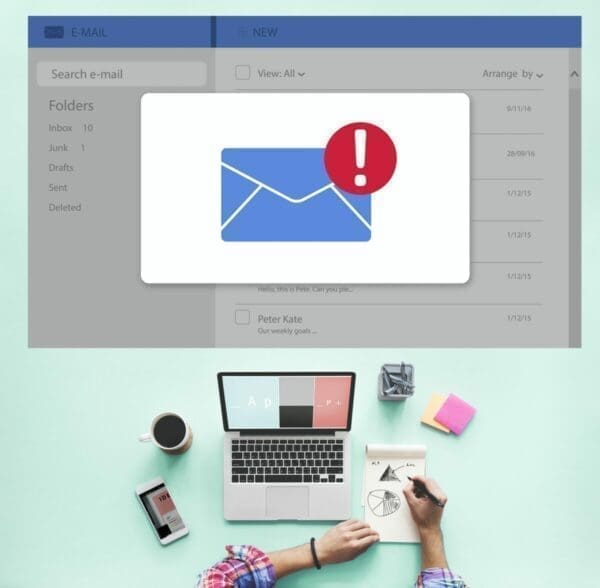How to Improve Your Email Etiquette
Email etiquette is extremely important in a company or business because email communications are part of the workplace. Without a set of rules in place, emails will turn out unprofessional and half-baked. Plus, without a system in place, your employees might slip up in one or two emails to someone of importance. Thus causing your business lose out on potential clients and making your brand’s reputation suffer for it. Worst of all, what happens when your new hires are oblivious to how to use proper emailing practices in the workplace?
Instead of having your employees feel confused about their emailing, there needs to be a system in place. So that emails are written and sent properly. Besides, it’s all about making those good impressions to email recipients, no matter who they are. With that said, this essential guide will explore the following:
- How to train employees to practice email etiquette.
- How to enforce email etiquette.
- The basics of email etiquette.
Read on!
Write an Effective Policy
“First and foremost, an effective email policy has to be created and put in place for everyone in the business,” says Lloyd Anderson, a marketing writer at Elite Assignment Help. “When writing an etiquette policy, be able to distinguish the difference between a professional and personal email. While most employees are familiar with writing personal emails, they should also learn how to write professional emails.”
Here are some ways to write and distribute this policy:
- Post the rules in:
- The breakroom
- The locker rooms
- The conference rooms, etc.
- Email the rules to all of your employees with instructions.
- Include the policy in the employee handbook (especially when giving handbooks to new hires).
“While reminding your employees every day isn’t necessary, it’s still important to make sure that your employees remember the protocols when it comes to sending emails,” adds Anderson. “Writing a transparent and clear policy for emailing is something to consider in your company, and it shouldn’t be overlooked whether your employees are new or current.”

Make it Part of Employee Training
For new hires, it’s important to make your expectations clear when talking about emailing in the workplace. In fact, your emailing policy should be front-and-center during employee trainings.
During training, you might come across inquiries on how employees should email coworkers, supervisors, clients, and so on. That’s why you’ll need to talk about email etiquette from the get-go. You should sit down with new hires and discuss:
- Appropriate times to email.
- How to proofread emails.
- What questions to ask in emails.
- How to create and maintain email lists.
- The tone, formality, and style of emails.
- How to reply to emails.
- Which people new hires are allowed to email for the time being.
- How to create templates for recurring emails.
In this way, new hires can adapt to your company’s emailing policy.
Make Training Interactive
Everyone likes to interact with each other. Perhaps you can integrate interaction into your employee training, especially when talking about emailing in the workplace. Many times, companies will use gamification and quizzes to get the ball rolling in your training session for new hires. Rather than showing a slide show or video to your employees about emailing rules, you can make learning a game. You can implement scoring and prizes (which we’ll get to later on in this guide) to spice things up.

Also, you can allow new hires to suggest rules for your email policy, or give feedback on current rules. You can even have them look at sample emails, and then ask them to evaluate each of them so that you can receive plenty of feedback from them.
Establish Appropriate Emailing Times
Emailing can – and should – happen at certain times. Email etiquette ensures that you and your employees stick to an emailing routine. This policy shows you and employees the expectations about email availability.
When discussing emailing times, consider the following factors:
- Active hours
- Days and nights
- Days off
- Weekends (if needed)
Reinforce Email Etiquette
Don’t be afraid to reinforce your email policy, so that everyone in the company is still in the loop on how things are done. With that said, it’s important to enforce consequences for those who don’t follow the rules. Repeat violations should be addressed right away, even if you don’t want to. While consequences might seem severe for some, your email policy should still be implemented and be seen as important.
Reward Those Following Email Etiquette
On the other side of the coin, you can reward employees that follow the rules. You can do things for them like:
- Invite them to a special lunch.
- Give them a voucher for something.
- Nominate them for a shoutout during a conference (in person or virtually), etc.
Use your imagination!
When you reward those who follow the rules, it may encourage others in the workplace to follow their example.
Welcome Employee Feedback On Email Etiquette
Just as you would like your employees to follow the rules, you should also allow them to offer plenty of feedback on:
- What they think about the current policies on email etiquette.
- What they can add to the current policies.
- Which things need to be changed.
“It’s important to note that every employee is unique, as well as their feedback,” says Jesse Berger, a business blogger at UK Writings. “Ensure that you and management read up on the different types of feedback that you might receive.”
As you can see, giving your employees a voice, especially when talking about policy, is much appreciated. You can even implement personality assessments so that you can get a good idea of how your employees will think about your policy more or less.
The Basics
So, now that you have a clear sense of how to train your employees on your emailing policy, here are 10 basic tips on how to practice proper emailing:

1. Know the Subject Matter
The subject of the email has to be short and sweet. Plus, the subject line has to be eye-catching for email recipients. Rather than use a full sentence, strive for short statements or phrases.
2. Appropriate Greetings
Next, you may want to take a look at how you greet your email recipients. Keep in mind, you and your employees will be communicating to different people via email: clients, coworkers, the CEO, and so on.
Here’s how to know the difference between informal and formal greetings:
- Say you’re emailing to a colleague or coworker, then you can opt for informal greetings like “Hi!” or “Dear Bob…”
- Now, for recipients like the CEO or a prospective client, consider a formal greeting like “Dear Mr./Mrs. …” or some other form of formal salutation.
3. Shorthand For Known Recipients ONLY
For known recipients – or people you are familiar with like your team members – you can write shorter emails with bullet points. Don’t ever do this for formal-oriented recipients. The correct email etiquette, in the latter scenario, would be to give detailed emails.
4. Email With a Purpose
Besides having an appropriate and brief subject line, it’s also important to write an email that has a purpose. In this case, you’ll need to ensure that your email is purposeful in the following ways:
- Any action(s) that your email recipient needs to take.
- A clear statement of why you’re emailing them.
- Bolding or italicizing key points.
- A defined due date for your email recipient to respond.
5. Don’t Use Humor if Unnecessary
Humor is normally reserved for informal emails. With that said, try not to drown your formal emails with too much humor. Try not to use too many colloquialisms or funny sayings. Rather, get to the point, and show respect in your formal emails.
6. Emojis aren’t Necessary
The use of emojis shouldn’t be found in your formal emails. Emojis should be reserved for emails to your colleagues and coworkers.
7. “Reply All” or CC at Your Own Risk
Think before you click on “Reply All” or the CC button because chances are, you’ll be sending out emails to the wrong people. For example, if you’re emailing to prospective clients, you wouldn’t want to send that important email to your family members who don’t need to see any sensitive information from said clients.
8. Practice Timely Replies
Timely replies are essential in email etiquette. It’s best to reply to emails within 24 hours, so that you acknowledge an email, and ensure that you reply to it at the right time. You can even establish a time when your employees can set up canned “Unavailable” email responses whenever they’re out of the office. In fact, set a time range of when employees can answer emails (say, 8 AM to 11 AM).
9. Spell Check ALWAYS
Always check your spelling and grammar before sending your emails. There are plugins like Grammarly that can help you ensure great spelling and grammar. But still, proofread your emails manually, so that you can fill in the gaps where your plugin might miss during revision time.
10. Think: Where Will the Email End Up?
Finally, mind your tone, language, etc. Chances are, your email recipient might not appreciate your accepted tone and language.
Conclusion
Email etiquette is extremely important in your company because that’s how others outside your company will view you and your employees. As you can see, how your company writes emails can mean the difference between winning over a client/customer, or losing them for good.
By following this essential guide, you and your employees will be commended for proper emailing practices; and recipients will thank you for it!




